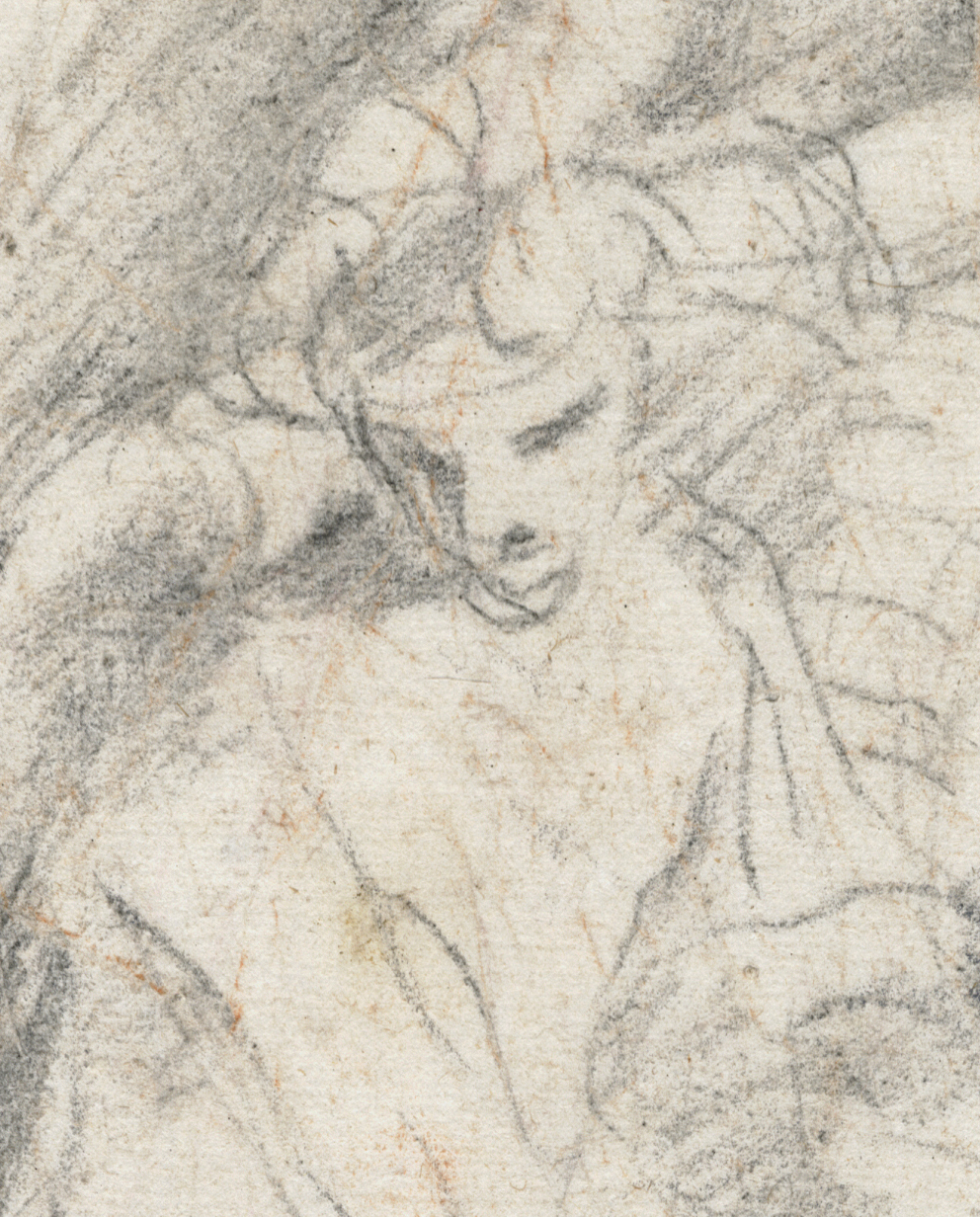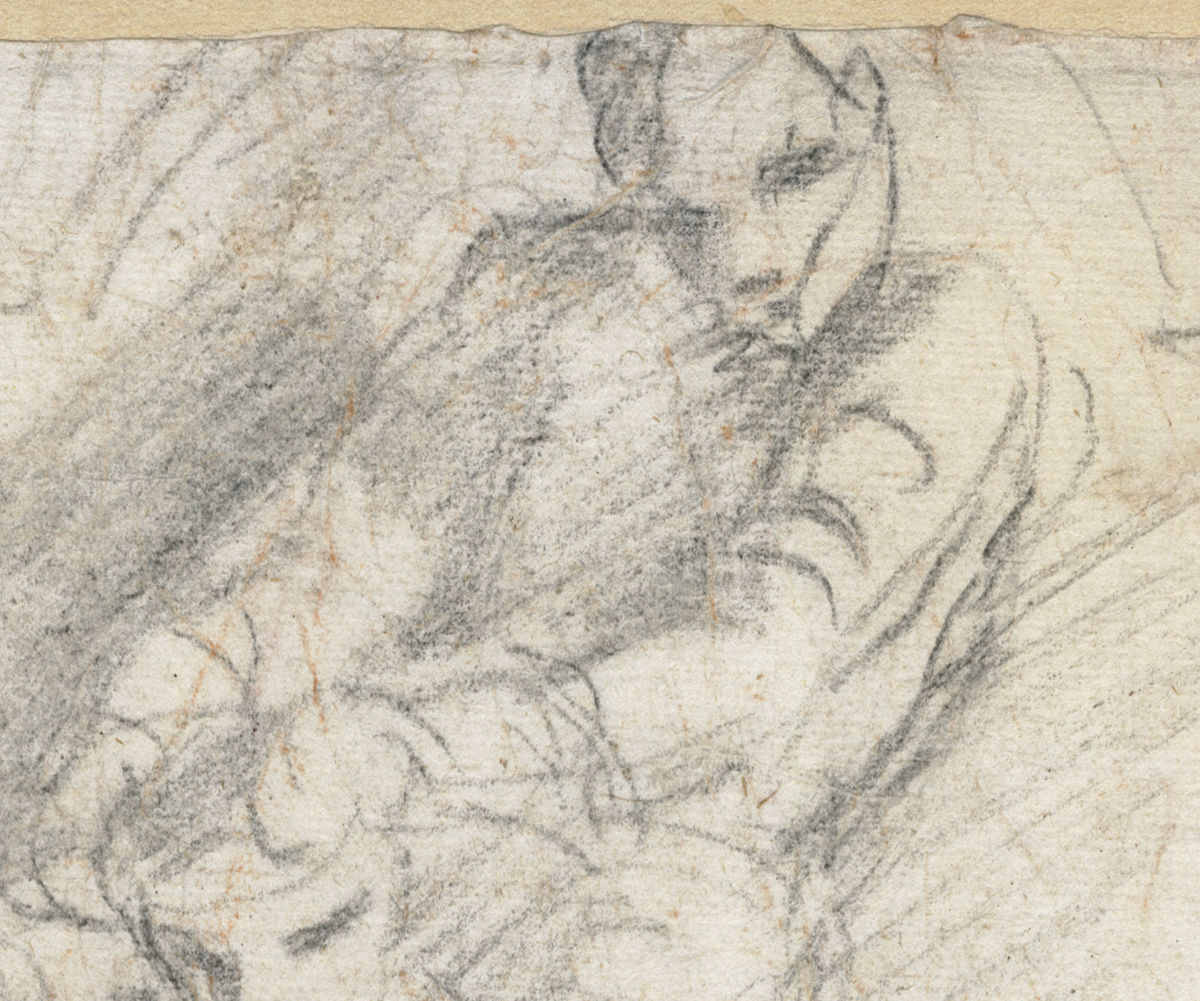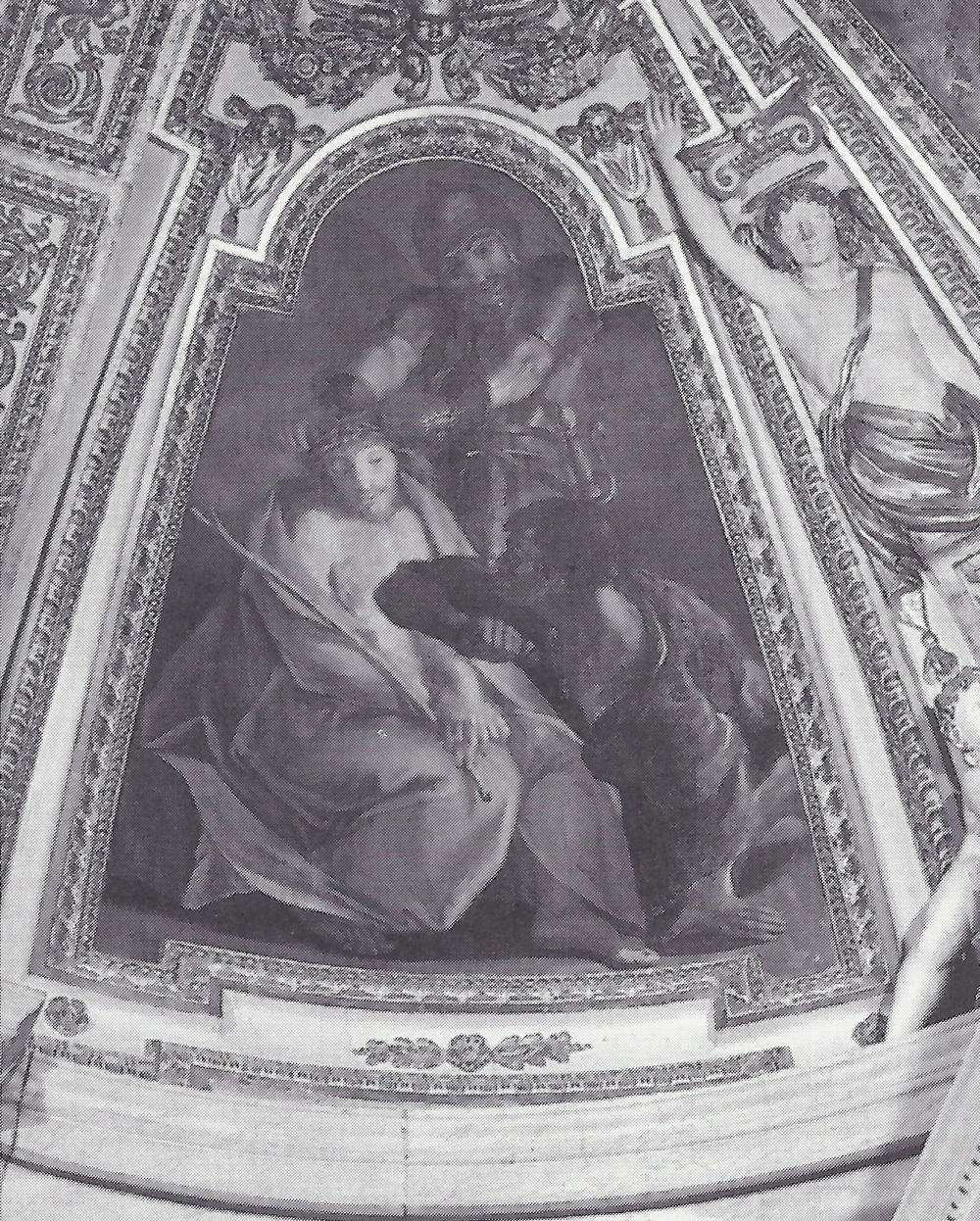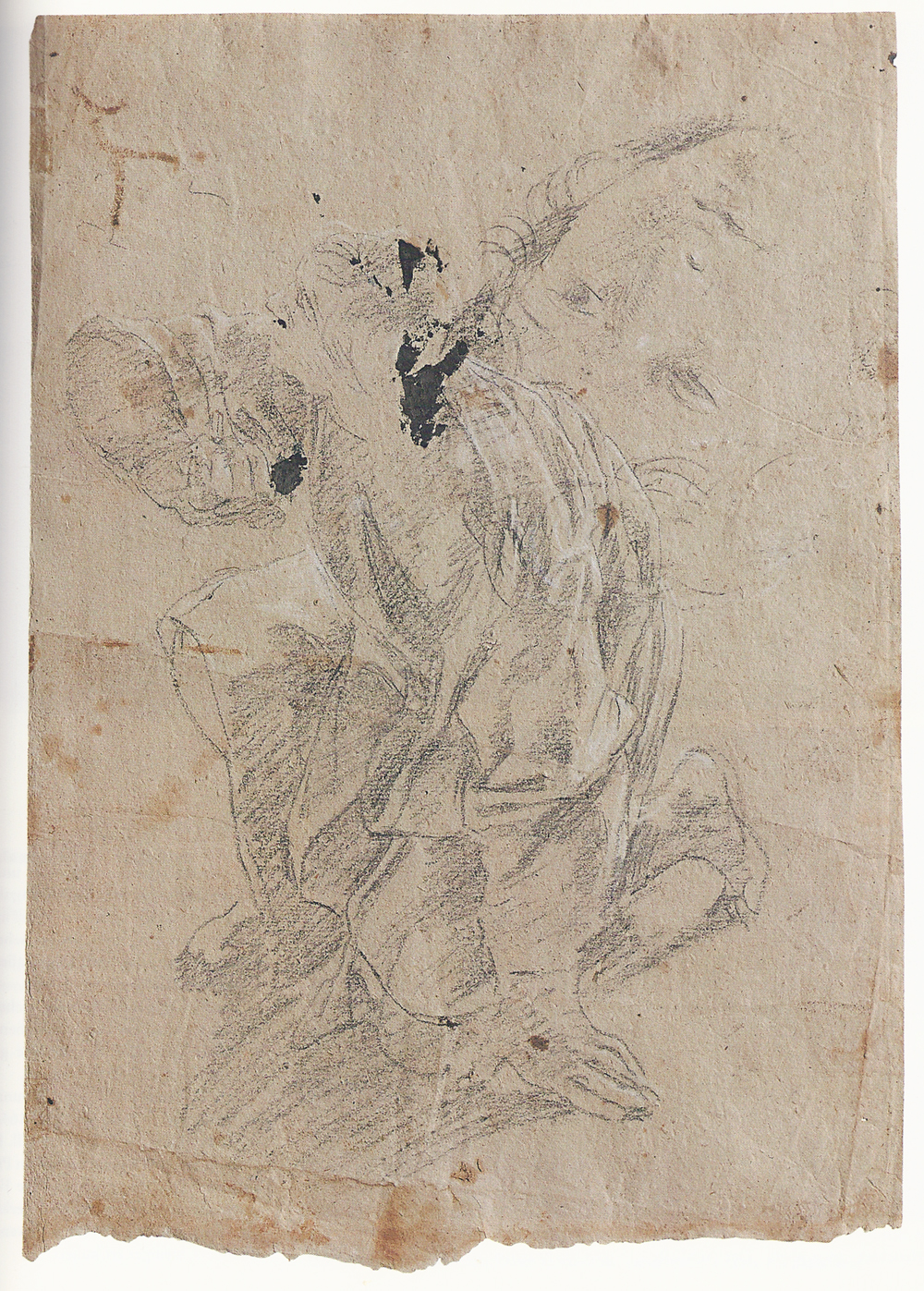GIOVANNI LANFRANCO (Parma 1582 – 1647 Rome)
Giovanni Lanfranco (Parma 1582 – 1647 Rome)
Christ Crowned with Thorns
Black chalk, traces of red chalk, 235 x 192 mm (9.3 x 7.6 inch)
Executed c. 1620/21
Provenance
~ Anonymous sale, Christie’s, London, 12 December 2003, lot 331
~ Private collection, Paris, until 2014
Literature
Erich Schleier, Dello stile naturale: die Zeichnungen des Giovanni Lanfranco, Museum Kunst Palast, Sammlung der Kunstakademie Düsseldorf, Düsseldorf 2006, p. 48, fig. 2
***
Giovanni Lanfranco was an early exponent of the Baroque style in Rome.1 In his home town of Parma, Lanfranco studied under Agostino Carracci and was influenced by Correggio’s dome frescos. In 1617 Lanfranco’s frescos in the Sala Regia in the papal Palazzo del Quirinale won him admiration as one of Rome’s most progressive painters. In the mid-1620s he introduced an approach to space dominated by diagonals that derived partly from the art of Tintoretto.
Lanfranco contrasted monumental foreground figures with partly hidden figures emerging from behind a rise. The resulting tension differed from the approach taken by Annibale Carracci, Domenichino, and Pietro da Cortona, whose compositions were organized in layers parallel to the picture plane. Lanfranco’s dome of San Andrea della Valle in Rome heralded the High Baroque by combining the Carracci figure style with Correggio’s illusionistic foreshortening. Domenichino, who lost this commission, is said to have weakened part of the scaffolding, hoping his rival would break his neck. From 1634 to 1646, Lanfranco worked in Naples, asserting himself against hostile local painters to finish the Cappella del Tesoro's cupola in Naples Cathedral. He returned to Rome in 1646.
When this fast and assured drawing was sold by Christie’s in 2003, it was suggested that it could be connected with Lanfranco’s frescos in the dome of the church of Gesù Nuovo, Naples, which were executed from 1634 to 1635, but lost in an earthquake of 1688.2 Since then the sheet has however been correctly identified by Erich Schleier as a study for the ceiling fresco of the same subject in the apse of the Cappella Paganini in the Santa Maria in Vallicella in Rome, executed between December 1620 and April 1621 (fig.).3 The tapering shape of the fresco compartment is indicated in chalk on the drawing. A further study for the fresco is preserved in the Museum Kunst Palast in Düsseldorf, showing Christ’s captor at the right in greater detail (fig.).4 The irregular edges and ink and paint stains on our and the Düsseldorf drawing illustrate that these sheets did indeed function as working drawings during the painting process.
SOLD
1. For the artist, see Erich Schleier, Giovanni Lanfranco. Un pittore barocco tra Parma, Rome e Napoli, Parma 2001, and for the artist as a draughtsman, see Erich Schleier, Dello stile naturale: die Zeichnungen des Giovanni Lanfranco, Museum Kunst Palast, Sammlung der Kunstakademie Düsseldorf, Düsseldorf 2006.
2. Drawings by Lanfranco for the project are in the Uffizi, Florence, and the Museo di Capodimonte, Naples, see Schleier 2001, op. cit. cat. nos. D35-36.
3. Schleier 2006, op. cit., p. 48, fig. 1.
4. Inv. no. KA (FP) 13716 verso; Schleier 2006, op. cit. cat. no. 2b, pp. 48-49.




